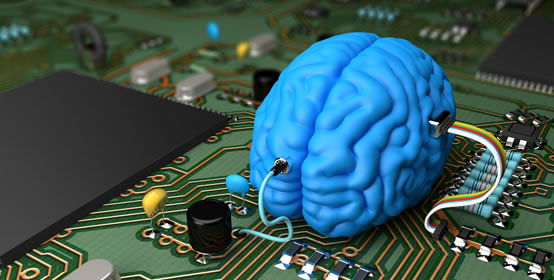
He’s at it again. Elon Musk, tech mogul and founder of Tesla, SpaceX, and OpenAI, is tapping into the relatively mysterious realm of the brain. He’s looking to create a direct interface between the brain and computers in hopes to reduce or eliminate the impact of neurological diseases and injuries and enhances overall cognition and brain function.
Last week, Musk announced that his new company Neuralink would be devoted to developing neural implants that would link the human brain with a computer interface. This complex system is called a Neurolace. Essentially, this interface would allow human brains to talk directly with computers. This has potential application to keep humans alive and healthy for longer while also increasing efficiency in everyday lives.
Introduced in California as a medical research firm, Musk’s project has brought in leading academics in neuroscience and engineering. With the idea being to add a layer to the human brain to compete with future artificial intelligence, the device initially would tackle neurodegenerative disease, and progress toward augmenting natural cognitive ability.
Musk’s Neuralink appears to have the purpose of merging our lives with software and paving the way for artificial intelligence, whose design would add what can be described as a symbiotic digital layer to the human brain. This concept is not a new one, as many brain scientists have dedicated their careers to research of this kind, paving the way for entrepreneurs like Musk to innovatively apply his fortune to bettering the human condition.
The concept behind this is bandwidth, essentially amplifying the speed of connection between your brain and your digital self, which has thus far been rooted in a freestanding digital device dependent on Wi-Fi or dial-up. Known as neural lace, the actual interface itself would need to be surgically placed inside of the human skull.
Traditional psychotropic medications work by releasing chemicals taken through a pill that communicate with different groups of neurons in the brain, although mostly blindly and with a lot of guesswork. By putting this technology inside of the skull where the communications are going on, we can get a lot of feedback of what works and doesn’t, allowing, in theory, for much better treatment outcomes and defined research.
Essentially creating and reading neural code to communicate with areas of the brain, it is anticipated that this technology could be used to approach disease and well-being in a way that has before been impossible.
By introducing an electronic circuit into the brain, one capable of interacting with the existing neuronal architecture, we find it within our grasp to alter the impact of existing neurodegenerative diseases and hopefully deter others from taking root.
Rudimentary technology using electrodes to stimulate nether regions of the brain has been used to treat some of the more devitalizing disorders, including Parkinson’s symptoms, severe depression or other mood disorders. However, the neural lace proposed has the potential to soften the line between electronics and neural circuits, making treatment less of a guessing game and more of a one-on-one with the idiosyncratic organ itself.
Some worry that this technology lays the groundwork for sci-fi level take-overs and it’s hard to say where this basic technology could lead us. In some sense, it would also be possible to download or upload thoughts that otherwise weren’t there, which would have controversial impacts to say the least.
In addition, the implantation of the device is dangerous with risk of infections and even death. Because of this, neurosurgeons are usually very reluctant to do any type of elective surgery. According to David Eagleman, a Stanford University neuroscientist, “The implanting of electrodes idea is doomed from the start.”